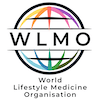
No more blame game: why we need to rethink what’s behind chronic disease
The government and policy makers often tell the public that lifestyle problems such as obesity, and the diabetes often associated with it, are their fault; just be a bit more virtuous and you won’t get a modern disease. This victim blaming tends to absolve governments, health bodies and big business from any blame for the modern chronic disease epidemic.
Instead, we propose a new way of looking at what’s behind chronic disease, one that takes into account social, environmental and other factors.
The burden of chronic disease
The public is shocked and horrified by infectious diseases like Ebola, SARS, bird flu and AIDS, but the reality about what might kill or harm them is very different. Around 60-70% of all deaths and disability in countries like Australia are now from heart disease, cancer, respiratory disease and other non-communicable chronic diseases.
These are less related to “germs” and more to lifestyle and environmental influences. By definition, if lifestyle- related diseases are man-made, they can also be “man-prevented”.
Two recent papers have tried to simplify the risk factors for these diseases by narrowing them down to four: smoking, diet, alcohol and being overweight.
However, rather than considering the influences from social, political and economic forces, this approach leads us to victim blaming. If only people would stop smoking, watch what they ate, drank less and did more exercise, then these health problems would go away.
This approach downplays the significance of government and in some cases, big business like the food industry, in influencing chronic disease.
How did we get here?
Researchers have had a different approach to looking at the reasons behind infectious diseases versus chronic diseases.
In the 19th and early 20th centuries, infectious diseases like polio, tuberculosis and smallpox were put down to one common cause: germs. The germ theory led to improvements in public health, hygiene and ultimately the discovery of antibiotics.
As these infectious diseases became less common, chronic diseases sprang up from the 1960s to take their place. But health specialists had no equivalent of a “germ” theory for chronic diseases.
This lack of a unifying theory has contributed to the fact scientists who study chronic diseases tend to work (and research) in silos. Some focus on heart disease, kidney problems, respiratory disorders, cancers, diabetes and obesity.
The “lifestyle” tag for the causes of chronic disease is one way of overcoming this. But its glib misuse has led to a search for a better alternative: anthropogens.
What are anthropogens?
We have grouped the determinants of chronic disease according to 15 anthropogens, defined as: ‘man-made environments, their bi-products and/or lifestyles encouraged by these, some of which are detrimental to human health.’
We believe this approach can help us define the universal determinants (“cause” in epidemiology is too strong a word) of most, if not all, chronic diseases.
Nutrition is the major voluntary factor considered in disease (too much fat, sugar, salt; too little fibre, variety). There’s obviously a lot to be gained from a good diet.
Activity (or more correctly inactivity) is one of the most under-estimated disease determinants of modern times. Together, poor nutrition and inactivity are also influenced by, and have an influence on, Stress, with health problems via anxiety and depression.
Techno-pathology or the ill-health effects of technology, includes injuries from machines and technology, such as motor vehicle injuries and warfare. It also includes more obscure problems such as repetitive strain injury and “screen dermatology” (skin problems from the electrical output from small screens). Inadequate sleep can interact with technology through vehicle and workplace injuries, but is also a risk for other diseases.
The Environment, through pollution and endocrine disrupting chemicals, is another factor. It can create a conducive atmosphere for disease (the “obesogenic” environment) and has a range of disease-ogenic effects. The “invironment” is part of this and refers to recent findings of gut microbial influences on health.
Meaningless, Alienation and Loss of culture and identity are recent additions to the list. We are just beginning to understood these factors, which relate to the loss of purpose of many in an impersonalised economic system, and the displacement of Indigenous and other populations.
Occupation influences health through biological (shiftwork), physical (exposure) and psychological (stress, peer pressure, conflict) factors. Drugs, smoking and alcohol are no-brainers, but should also include iatrogenesis (literally, doctor induced disease) from prescribed medications.
Over-exposure to sunlight, radiation, passive smoke, materials like asbestos, and Under-exposure to sunlight, light and mental stimulation, also have health implications.
Finally, the absence or breakdown of supportive Relationships can have outcomes in chronic disease. Social inequality is also only now being recognised, with many reports showing the significance of relative wealth in a country on health and other social factors.
Dealing with microbial causes of disease under the single term “germs” led to such great improvements in infectious diseases. So, dealing with the NASTIE MAL ODOURS listed here, which can lead to chronic diseases through underlying anthropogens, should be a walk in the park.
And the park might be a good place to start.



